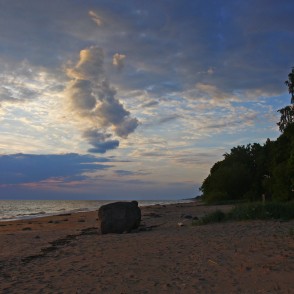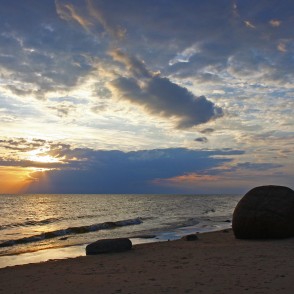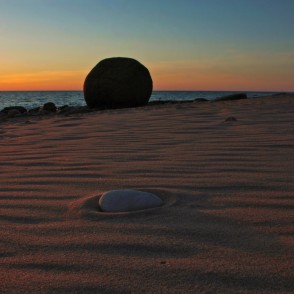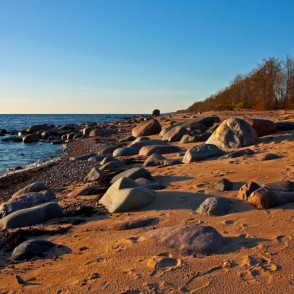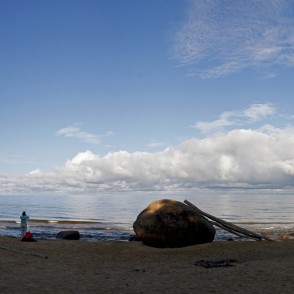The large Lauču (Lauchi) stone is a typical rapakivi granite boulder made up of granite viborgite, characterised by large semicircular pink callium quartz crystals, which are contained in a finer potassium feldspar (KSi3O8), quartz (SiO2) and biotite (black mica) mass.
The rock has been formed many kilometres in the deep, when the earth’s crust was formed. The stones were washed up onto the coast by a storm in 1853 together with huge sheets of ice. The total size of the rock is: 2.15 m high, 4.3 m long and width 3 metres, volume is 24 m3, weight is 70 tonnes.
The red-brown colour shows a similarity to southern Finland’s Viborga rocks, which an iceberg brought there 2000 years ago. The effects of the ice movement can be seen on the Lauču stones surfaces, especially along the surface facing north. The waves and frost together with the weight of rock fragments have formed its rounded shape known as "rapakivi".
It has been said that the big Lauču rock was pushed out from under the depths of the sea in the spring of 1853 during a storm and the ice formation helped push it out.
Also the small Lauču stones most likely also comes from Viborg in Finland and is a different raparkivi stone called piterlits. The small Lauču stone measures 1.9 m in height, length 3.3 m, width 2.4 m, circumference 9.5 m and has a volume of 11 m3.

